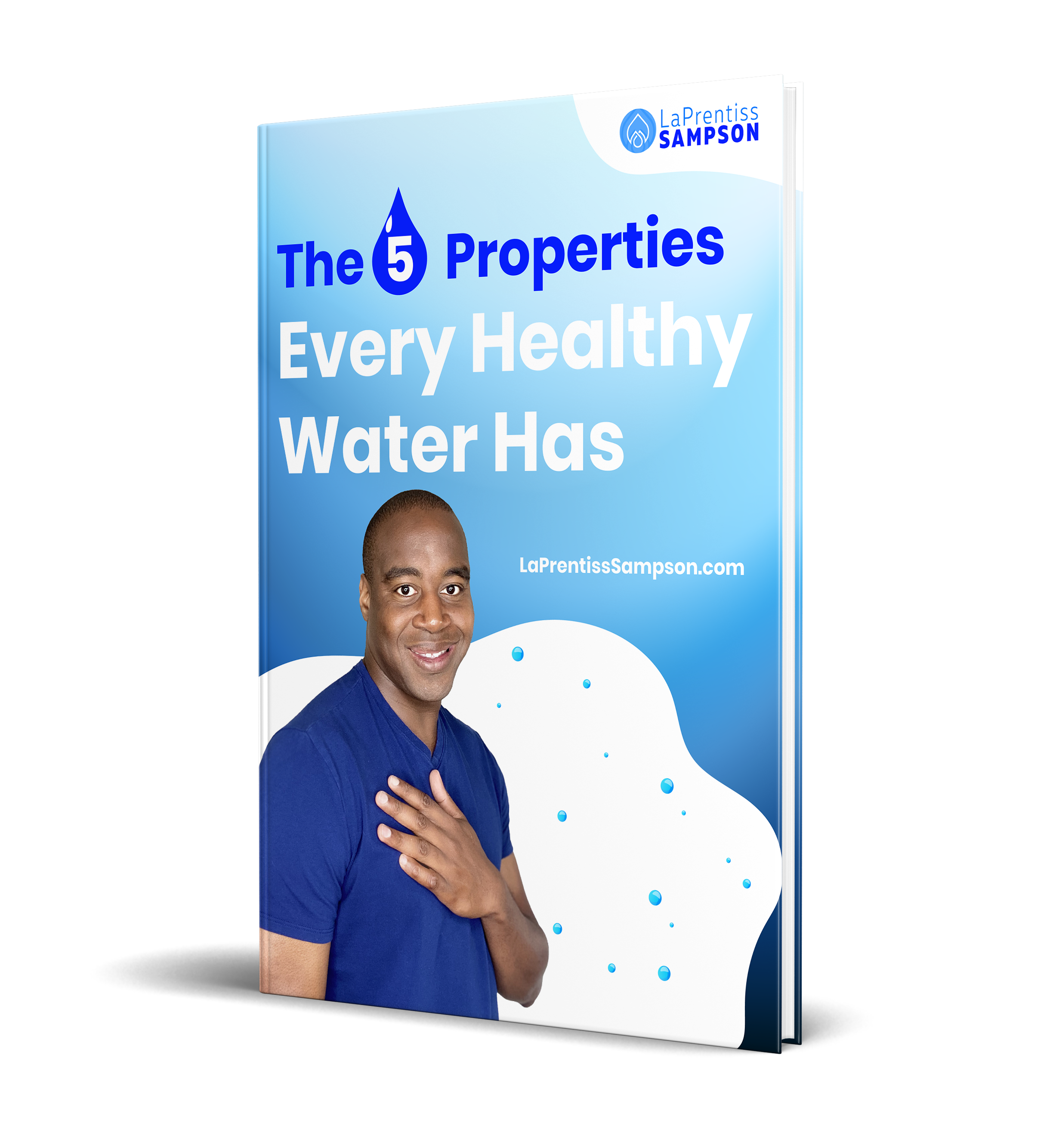In today's review, we are going to see is Nestle Pure Life water bad for you!
As a point of reference, we’re going to test it for 3 specific properties against electrolyzed reduced water.
Find out how will it compare and should you be drinking it!
We’re gonna do 3 different tests:
Test for Antioxidants
Acidity/alkalinity Test
Superior Hydration Ability
Without further ado, let's get started!
Antioxidants
The first property we’re gonna test is oxidation.
Picture a banana. If you leave it outside for some time, it will start changing color from bright green, to yellow, and in the end, become brown and black.
We call this process oxidation.
Oxidation is encouraged by bad air quality, electronics, radiation, bad food, pollution. It is positively charged and creates aging and inflammation in our bodies. Oxidizing water creates a bunch of diseases and makes us sicker in general.
So obviously we want our water to be an antioxidant. We want it to be negatively charged, to reduce inflammation, oxidation, and essentially be our fountain of youth.
Let's go ahead and see if Nestle Pure Life water is oxidizing us, thus making us sicker, or maybe acts like an antioxidant and protects our health!
To find out, we’re gonna use an ORP meter.
ORP Test
The ORP meter measures oxidation-reduction potential and shows the water’s ability or inability to reduce oxidation. Any number that is positive means that the water is creating oxidation in your body, thus leading to aging, sickness, and diseases.
On the other hand, a negative value indicates that the water is good for you, reducing oxidation and inflammation of your cells and protects your body.
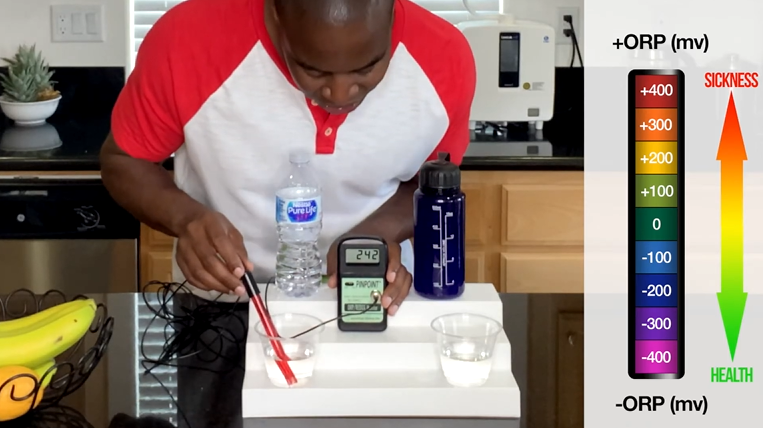
As you can see, it is definitely a positive number. That means that it's creating sickness, aging, and inflammation in the body.
Now let's go ahead and take a look at electrolyzed reduced water.
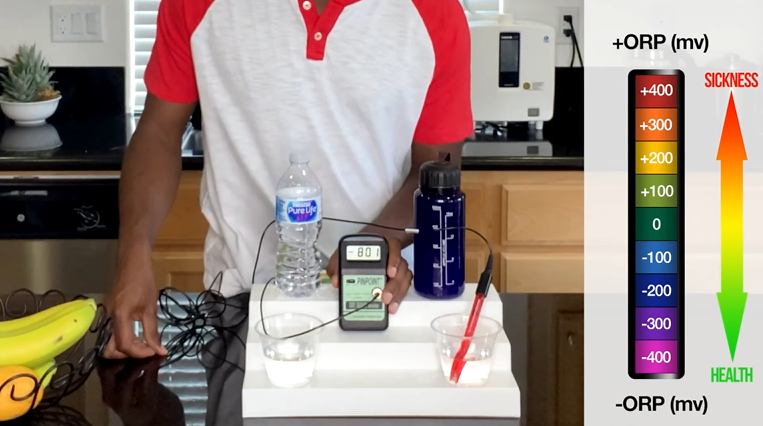
It is a big negative number which means that this water is an antioxidant!
The first test didn’t go well for Nestle Pure Life water.
Alkalinity
Our next test is alkalinity.
We should keep our body in an alkaline environment.
And even when we don’t, our body's always trying to find a way to reach its natural pH level.
Take your blood as an example.
In order to maintain your natural blood pH level, your body will take its own nutrients to fix the issues caused by oxidizing drinks like bad water and sodas.
This is how we end up getting diseases like osteoporosis, eczema, even Alzheimer's.
pH Test
That’s why our water should be alkaline. And to test if Nestle Pure Life water is alkaline or acidic, we’re going to use pH drops.
If the color of the water changes to yellow, orange, or red, it is an indicator that Nestle Pure Life water is acidic. On the other hand, blue, light purple, and purple indicate alkaline water.
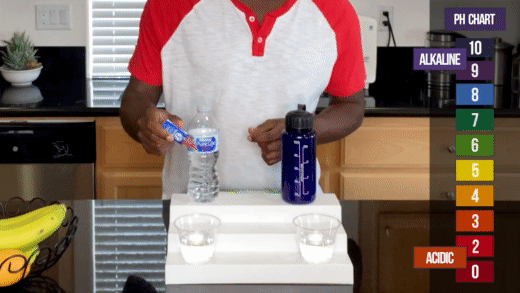
You probably noticed that Nestle Pure Life water went from orange to green.
Why did it react in this way?
Because there are inorganic additives added to this water to hide its acidity.
Just to name a few:
- Calcium chloride - That is salt that is used to de-ice the road.
- Sodium bicarbonate - which is essentially baking soda.
- Magnesium sulfate - which is Epsom salt.
But there is a cool trick to reveal this waters true pH level. And it’s done by simply introducing an organic component from my breath.
How?
Well, let just blow some air through a straw.
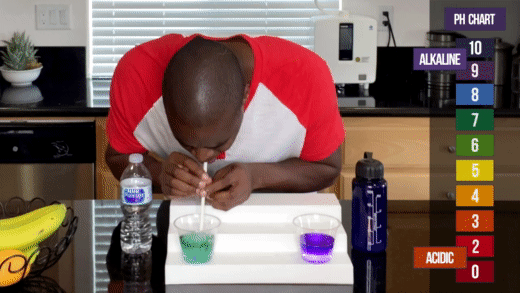
The water turned yellow!
So, Nestle Pure Life water is hiding it’s true pH.
To see how the water that I’m drinking reacted, you can watch the full video review here!
Let’s do the final test.
Superior Hydration
The water that we're drinking should hydrate us at a cellular level. It shouldn't just sit in our stomach and make us feel bloated.
Picture a chain fence.
Now, if we take a beach ball and throw it at that chain link fence, is it going to go through the fence? Probably not.
However, if we throw a marble it's probably gonna go through.
Your water should act just like that marble. It should be able to penetrate through that chain link fence, which is our cells.
Teabag Test
But to show you how it really works, we’re gonna use a tea bag.
If the water is small enough it's going to pass through the tea bag, take nutrients and make tea.
Now, you may say “Hey, but you have to boil the water first!”.
Well, why?
We boil it to create small enough molecules that can pass through the teabag.
However, if your water is not bad for you and it's actually healthy for you, then it should be able to automatically hydrate you, kind of like the water that I’m personally drinking. It should go through the tea bag without being boiled.
So, let’s see if Nestle Pure Life water does that!
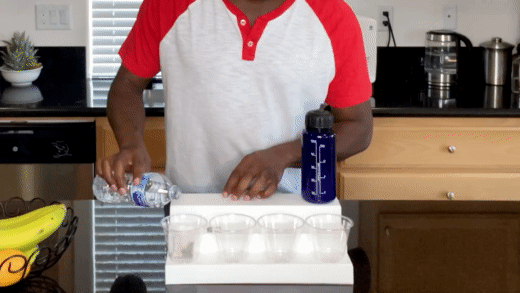
It did absolutely nothing. Nestle Pure Life water doesn’t hydrate us on a cellular level.
But how will the water I’m drinking do?
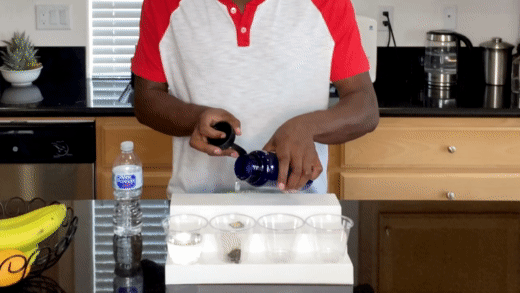
Now you’re probably thinking “You know what LaPrentiss, you cheated! The bag was already wet!”
Fair enough. So let me try this again with Nestle Pure Life water.
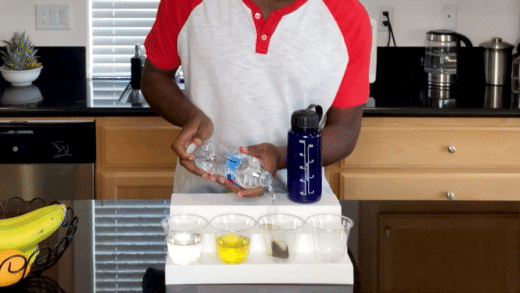
There is a little bit of color change, but that’s just the residual from the prior step.
Think about it.
You should be able to get hydrated after having just a little bit of water.
If you were drinking the right water, water that's actually healthy for you and that hydrates you on a cellular level, you will be able to immediately start getting the benefits of that.
Unfortunately, Nestle Pure Life water will hydrate you maybe 15% as opposed to electrolyzed reduced water that I’m consuming.
Conclusion
Is Nestle Pure Life water bad for you?
Well, it's definitely not the best for you.
If you're looking to get rid of toxins out of your body, stay truly hydrated and healthy, you deserve the best.
Nestle Pure Life water simply isn’t good enough.
To help you in your journey towards true wellness, I made a report about the five properties every healthy water has. I personally use these tools in my life right now!
If you want something that's better, water that actually improves your health and life quality, contact me and do the best for your well-being!
For more content like this make sure you subscribe to my Youtube channel and check me out on Facebook to get more tips on boosting your wellness.


